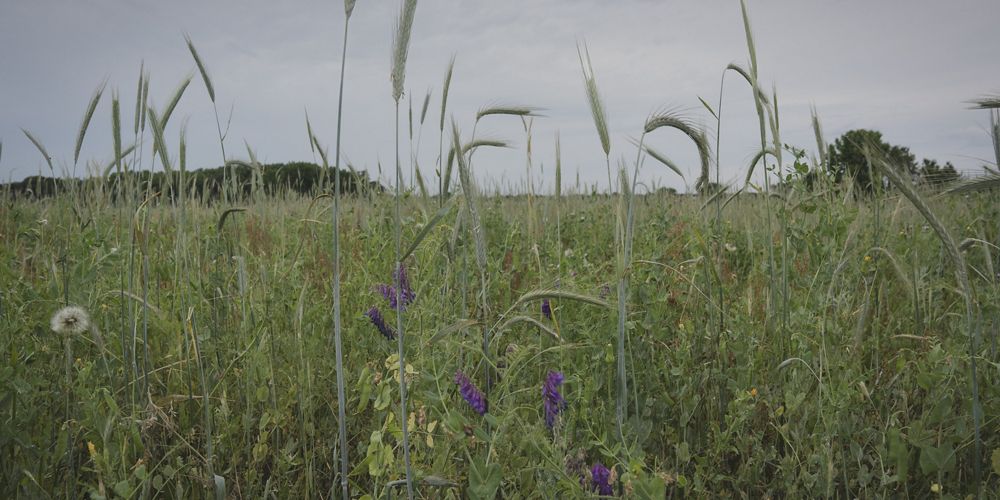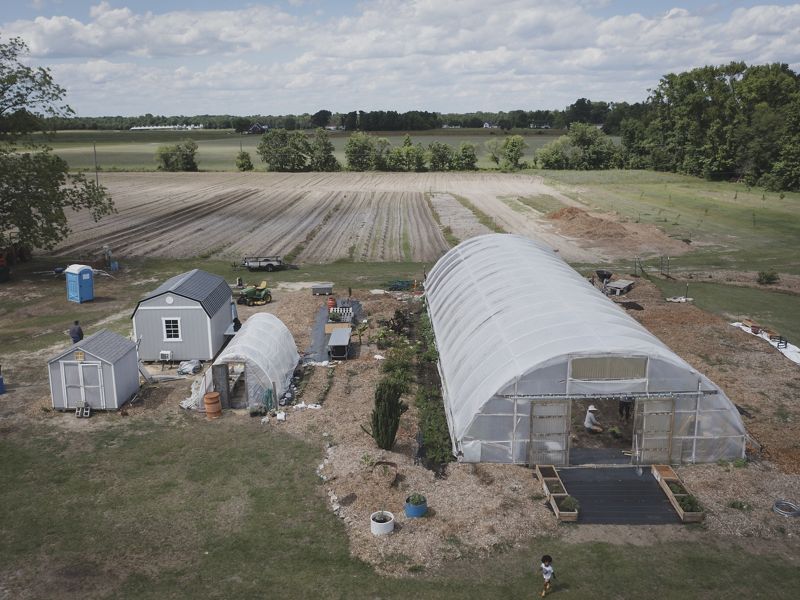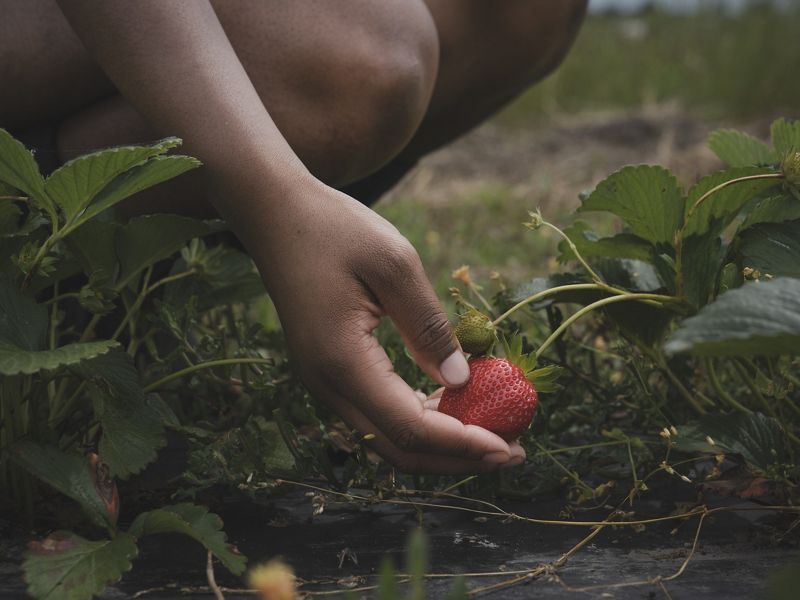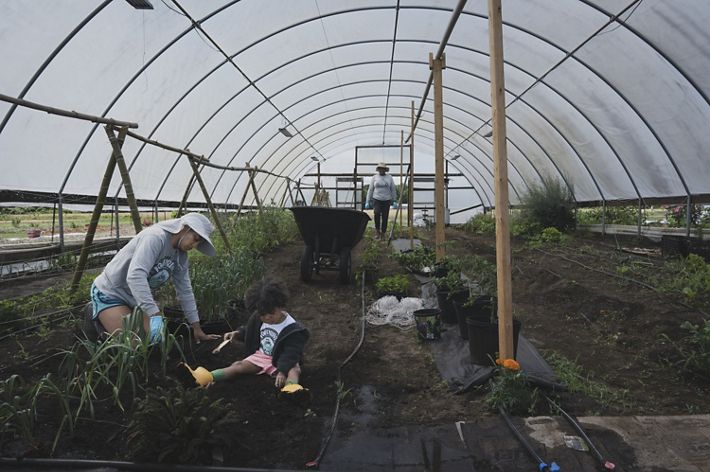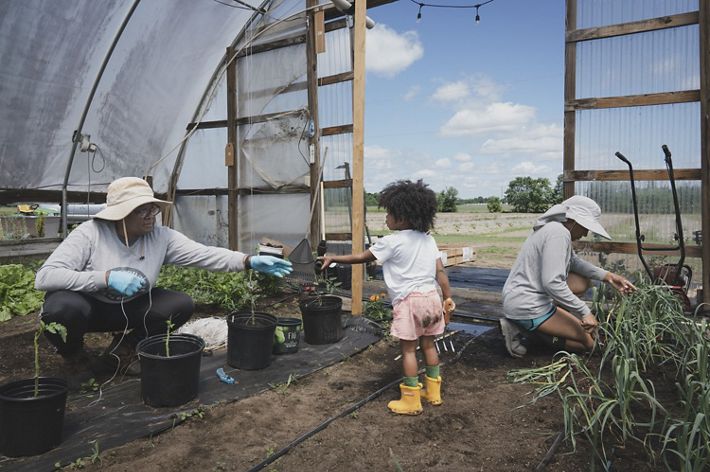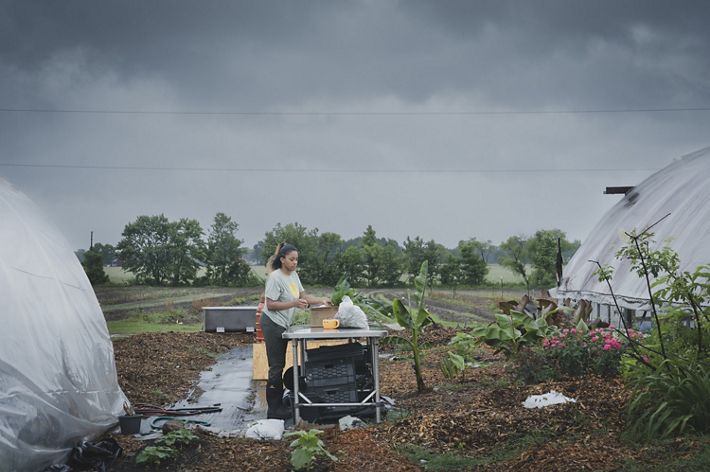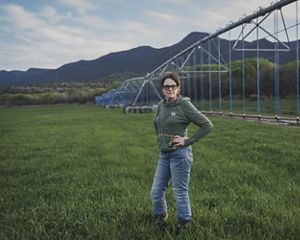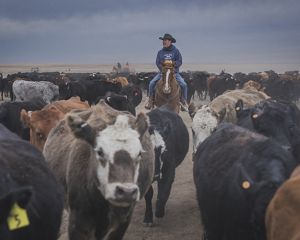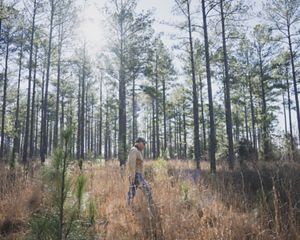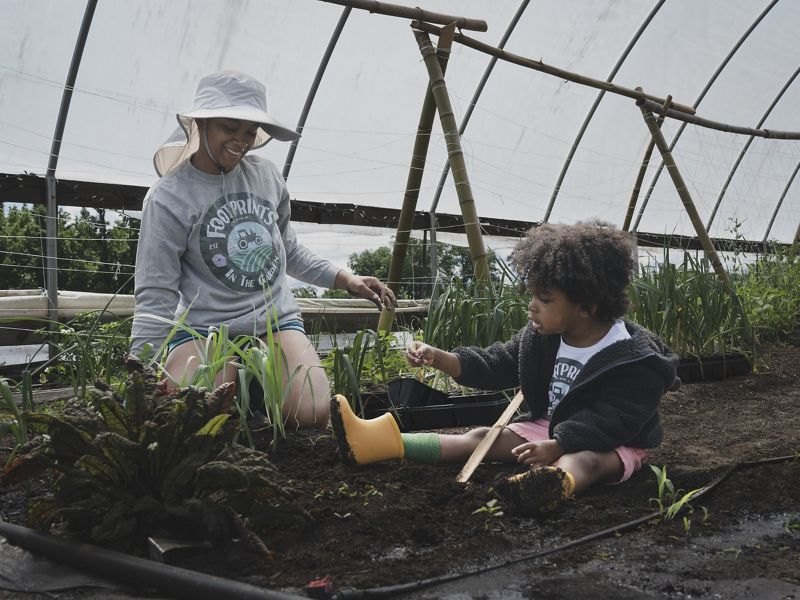
Three Generations Erin Martin and her daughter Elana plant leeks in the high tunnel at their family's farm in Mt. Olive, NC. Their farm, Footprints in the Garden, has been in their family for over 140 years. © Morgan Heim
On a breezy spring morning in Mt. Olive, N.C., Carrie Martin and her daughter Erin Martin are tending crops on their farm. While the women plant leeks and harvest the final snap peas of the season, Erin's two-year old daughter, Elana, runs through the rows of vegetables wearing bright yellow rainboots, trowel in hand.
This farm has been in the Martin family for more than 140 years. Fields that were once filled with tobacco and livestock now hold rows of corn, black beans, watermelons and other crops. For Erin, the land is a link to her ancestors.
“It gives me chills some days to know that they've walked the same land in the same footsteps,” she says while taking a break from working on the farm, called Footprints in the Garden.
It’s a legacy she and her mother are eager to pass on to the next generation.
Quote: Erin
It gives me chills some days to know that they've walked the same land in the same footsteps.
The Martin family’s long tenure on their land makes them outliers. In the 20th century, Black farmers lost more than 90% of their land, largely due to discriminatory practices and a complicated legal system known as heirs’ property, or property that’s been passed through generations without a clear title or deed. As a result, those who did get into farming had very little land to farm on. “The African American experience with farming has been very tumultuous,” Carrie Martin says.
And for the Martins, who only farm seven acres, there is the added issue of surviving as a small-scale farmer which, even now, is no easy task. An onslaught of challenges—such as severe weather events which destroy harvests to a lack of access to sustainable financing—has pummeled small farms from every side in recent years. As a result, thousands of operations like the Martins are shuttering each year. The Farm Bill and local organizations like the Black Family Land Trust and Fertile Ground have been able to start addressing some of these challenges, but with the love and labor of seven generations invested in this land, Carrie and Erin are determined to keep fighting for their farm.
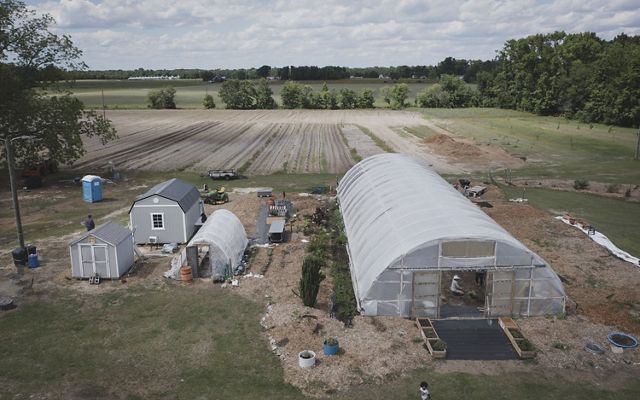
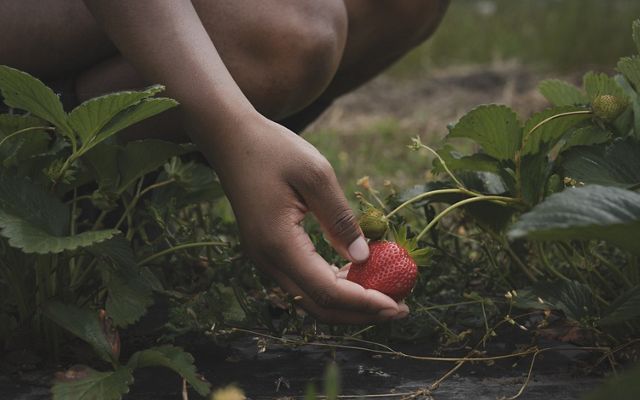
Footprints in the Garden comes to Carrie and Erin by way of Carrie’s husband’s great grandfather, Harry Martin. The journey to landowner was not simple for him. He escaped slavery and served in the 135th Regiment of the United States Colored Infantry during the Civil War. After the war ended, it would be another 20 years before he was able to purchase the land.
Over the decades, the Martins ensured they had all the legal paperwork to hold onto their land and purchased neighboring plots as they were being sold. They knew that this paperwork was critical. Historically, economic and social discrimination left Black farmers without access to wills, land titles and other legal documents that showed ownership, leaving their land vulnerable to involuntary land loss.
Nowadays, when Carrie and Erin stand on their farm, they see Martin family land in every direction. Yet many of their relatives have stopped farming in favor of more predictable and profitable jobs in Raleigh, N.C. and other nearby urban areas.
Carrie and her husband, Tim Martin, were two of those people who left the country for greener pastures in Raleigh, only making the hour drive back to the farm to carry out basic tasks. Over the decades, the farm often produced just enough money to pay the property taxes.
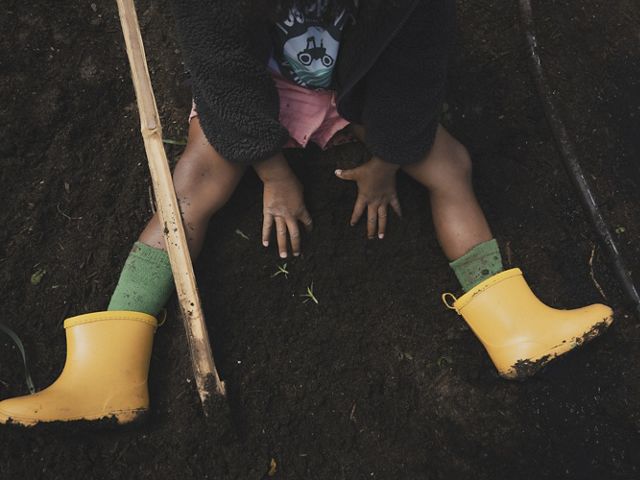
What is the Farm Bill?
The Farm Bill provides funding for voluntary, incentive-based programs that help farmers, ranchers and other landowners address climate change while conserving their land and way of life.
The Farm Bill provides $6 billion annually for conservation. From incentivizing climate-smart agricultural practices to opening doors for permanent conservation through agricultural conservation easements, this critical bipartisan legislation benefits every single state in the country.
For operations like the Martins, this legislation can help bolster regenerative agriculture practices, among many other things. The next Farm Bill should continue to fund programs, such as EQIP, which provide financial assistance to producers who implement sustainable agriculture practices on their land.
In 2014, Carrie began to think about the next chapter of Footprints in the Garden. She wanted to pass along land that would be an asset rather than a burden to her children. She decided that a high tunnel—a long, tube-shaped greenhouse—would be the best next step for the farm. It would lengthen their growing season, help them control their water usage and create an area with rich, healthy soil to support a diverse mix of crops.
But high tunnels are expensive. For support, she turned to the Farm Bill, the federal government’s largest investment in the conservation, management and restoration of private lands. The Farm Bill provides resources and tools to help farmers, ranchers and forest landowners implement conservation practices on their land.
The Farm Bill’s Environmental Quality Incentives Program financed 90% of the costs of constructing the new high tunnel. The Martins also received a water management plan from their local Natural Resources Conservation Service agents.
While Carrie is grateful for the Farm Bill’s financial assistance, as a small family operation, coming up with the remaining funds, which totaled over $5,000, was a challenge. In her opinion, it’s just one example of how the Farm Bill could do more to support small-scale farmers who are less likely to be tapped into the legislation’s programs.
Life as a Small-Scale Farmer
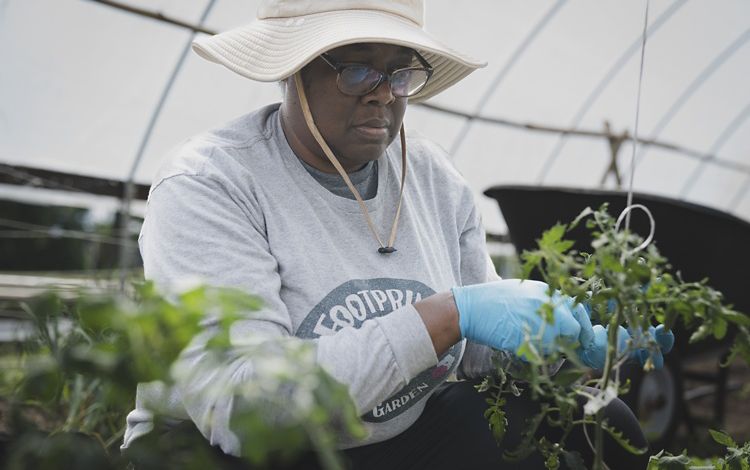
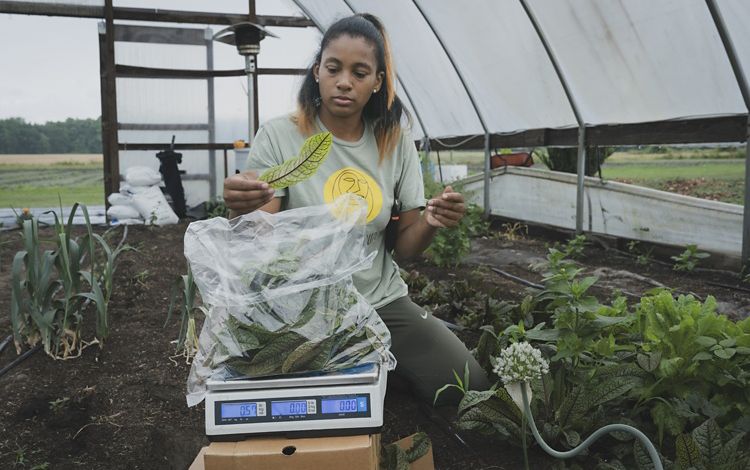
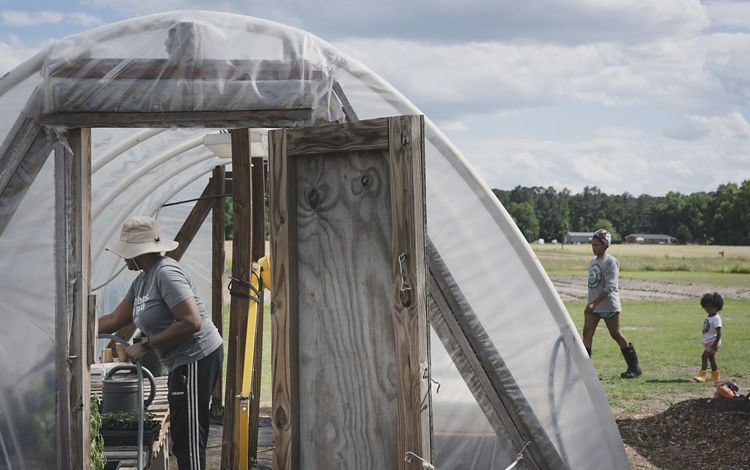
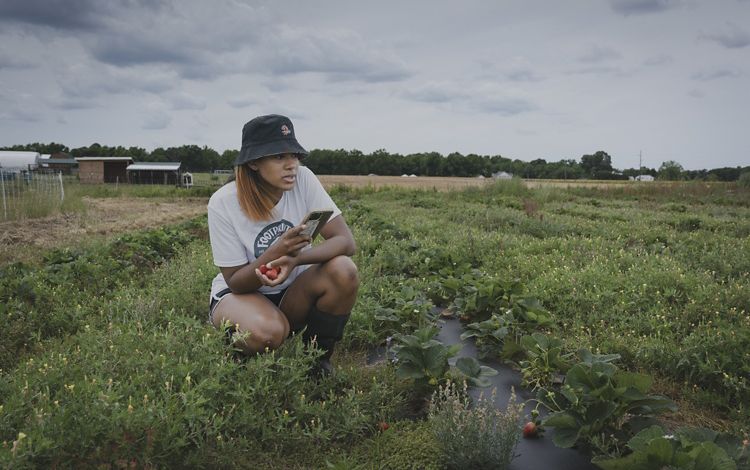

“A lot of our problems revolve around access to capital, having slow patient capital,” Carrie says.
The number of American farms has dropped from 6.8 million in 1935 to 2 million today, and, on average, the remaining farms have gotten much bigger. This is partly because small-scale farmers have struggled to access government funding, such as the cost share programs in the Farm Bill, at the same level as larger farms.
Many lawmakers and organizations, including The Nature Conservancy, are advocating for changes in the next Farm Bill that would better support small farms which have long been the foundation of many rural communities. Proposals include increasing the availability of credit for land acquisition and other farm improvement costs, removing requirements that have prohibited small farms’ participation in Farm Bill programs in the past and creating more flexible payment options for cost-share programs, such as EQIP.
Carrie wishes more lawmakers understood how difficult it is to be sustainable as a small farming operation.
“Having more funds dedicated to small-scale farmers would make it possible to support the sustainability of their local communities,” Carrie says. “Allowing farmers and farm families to be able to take advantage of those programs would increase the availability of nutrient dense foods and decrease health disparities.”
This year, for the first time since 2014, they’ve been able to access another Farm Bill program: the Conservation Stewardship Program, which pays agricultural producers to adopt conservation practices. Carrie and Erin are using funding from this program to establish a forestry conservation plan on their land, allowing them to access timber markets and generate additional income.
Quote: Carrie
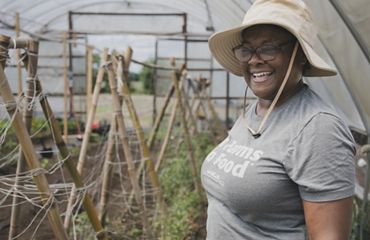
Having more funds dedicated to small-scale farmers would make it possible to support the sustainability of their local communities.
In the past few years, Erin has brought new energy to the farm. She’s spearheaded the planting of a small orchard of fruit and nut trees, the addition of an herb garden—whose harvest can be sold in bulk to wholesale markets—and a wash shed that allows them to clean and store their crops to sell to larger markets, such as grocery stores. She has also been working with the University of Mount Olive to create a new food hub, which will act as a middleman between local producers and purchasers, such as restaurants.
To support their biggest asset—their soil—the Martins have implemented a range of climate-smart practices. In the off season, they plant cover crops, such as winter rye, which add nitrogen back into the soil. Many of their fields are intercropped with different types of vegetables to combat pests and increase soil fertility.
“With our soil practices, we have noticed some change in our soil for the positive. There is less clumping and it's able to hold the water more,” Carrie says.
Although the farm is seeing growth, both Carrie and Erin still must work off-farm jobs in Raleigh to support themselves. Carrie works for the Black Family Land Trust, which preserves and protects Black-owned farms and lands, while Erin works at Fertile Ground, an organization in Southeast Raleigh dedicated to increasing access to healthy, affordable food within the predominantly Black community.
But they both dream of a future where they can thrive off the income generated from the farm.
“For Erin, I don't want her to have to work three jobs to be able to fulfill her passion,” Carrie says. “I want her to be able to sustain herself and her family on one job.”
At the end of the day, this land is important to Carrie and Erin not because of money, but because of the legacy it represents. When Carrie’s mother-in-law passed away, she promised her she would take care of this property. It’s a promise she plans to keep.
“Land is the only asset that if you take care of it, it will take care of you,” Carrie says.
Speak Up for Nature
Support Farm Bill Conservation Programs
The Farm Bill offers a critical lifeline to farmers, ranchers and landowners who are interested in better conserving and managing their lands. Tell Congress: pass a Farm Bill that supports conservation.
